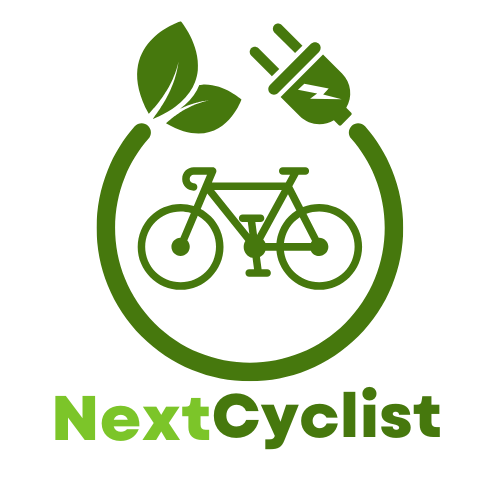Owning an ebike can enhance your daily commute and make getting around a breeze, but improper use can lead to unfortunate mishaps. What Not To Do With An Ebike: Avoid These Mistakes is all about steering clear of common pitfalls that can ruin your riding experience and even compromise your safety.
Imagine investing in a high-quality electric bike only to discover you’re making small mistakes that add up to big problems—like battery draining sooner than expected or poor handling. Those blunders not only frustrate you, but they can also diminish the joys of riding.
So, what can you do to keep your ebike in top shape? This article will walk you through essential tips on what to avoid, ensuring a smoother and more enjoyable ride. From battery care to maintenance traps, we’ll cover it all so you can maximize your ebike’s potential and ride confidently. Ready to keep your adventure on the right track? Let’s jump in!
Do not exceed the weight limit specified by the manufacturer. Avoid riding on steep hills that exceed the bike’s capabilities. Do not ignore traffic rules or ride recklessly. Avoid storing your e-bike in extreme temperatures. Do not neglect regular maintenance like battery checks and tire upkeep. Avoid using your e-bike for purposes it is not designed for, like heavy cargo transport.
TL;DR
- Regular Maintenance is key for safety: check tire pressure, brakes, and lights before rides.
- Weight Limits matter: know your e-bike’s capacity to prevent performance issues and damage.
- Battery Care is essential: charge per manufacturer’s guidelines, avoid complete discharges, and store properly.
- Follow Traffic Rules: obey local laws, use bike lanes, and signal your turns to promote safety.
- Weather Awareness is crucial: dress appropriately, check forecasts, and adjust your riding for rain or snow.
By keeping these points in mind, you’ll enjoy a safer and more enjoyable ride on your ebike!
Neglecting Regular Maintenance
If you own an ebike, letting regular maintenance slide can lead to avoidable problems. It seems simple, but skipping checks can seriously impact your ride quality and safety. Here are some key areas to focus on:
-
Regularly check tire pressure to avoid flat tires. Properly inflated tires improve performance and range, making your ride smoother. Use a pump with a built-in gauge for quick checks before each ride. If your tires are under-inflated, it can lead to more resistance, affecting your battery life.
-
Inspect brakes and lights before each ride for safety. A quick check can make all the difference. Squeaky brakes or dim lights can indicate issues that may need immediate attention. Make it a habit to look over these critical components; it’s your safety on the line.
-
Follow the manufacturer’s maintenance guide to prolong bike life. Each ebike might have specific needs, so consult the maintenance manual for parts like the battery and drivetrain. Keeping your bike maintained can save you from costly repairs and ensure your bike runs like new.
By putting these simple maintenance steps into practice, you can keep enjoying your ebike fully and safely. Regular checks not only enhance performance but also help you make informed decisions about upgrades or necessary repairs without unnecessary stress.
Remember, a well-maintained ebike pays off in the long run. For more detailed insights, check out our e-bike cost savings calculator to see how smart maintenance can keep your costs down!
Overloading Your E-Bike
When you're excited about your new ebike, it can be tempting to carry as much as possible to make the most of its electric power. However, overloading your e-bike can lead to serious issues, such as poor handling and potential damage to your bike. Here’s what you need to know about maintaining your ebike's performance while avoiding a mishap.
Know your ebike's weight limit to prevent damage
Every ebike comes with a specified weight limit, usually listed in the user manual. This limit includes both the rider and any additional cargo. Ignoring it can lead to damaged components, poor braking, and a stutter in your ride. Always check your model’s specifications to stay within the safe weight range.
Avoid carrying heavy loads that can impact balance
Carrying heavy items not only strains your ebike but can further compromise its stability. For instance, if you’re transporting groceries or gear, consider using a cargo rack designed to distribute weight evenly. An imbalanced load makes it difficult to steer and can cause accidents. Keep your cargo light and manageable for safer rides.
Use proper storage methods when transporting items
When loading items onto your ebike, opt for storage solutions like baskets, panniers, or even a dedicated trailer. These methods help secure your belongings, preventing them from shifting during your ride. If your ebike has a rack, make sure to fasten items tightly to minimize any sway or bounce that could affect your handling.
By adhering to these guidelines, you can maximize your ebike’s performance and ensure a smooth, enjoyable ride. Here’s a quick reference table to assist with weight limits and storage options:
| E-Bike Model | Weight Limit (lbs) | Recommended Storage Solutions |
|---|---|---|
| Model A | 250 | Panniers, cargo net |
| Model B | 300 | Hard-shell baskets, frame bags |
| Model C | 275 | Rear racks, lightweight trailers |
Remember, keeping your ebike within its limits not only enhances your riding experience but also prolongs its lifespan. Happy riding!
Ignoring Battery Care
Taking care of your ebike's battery is crucial for ensuring its long-term performance and reliability. If you overlook battery care, you might encounter issues that can significantly impact your riding experience. Let's explore some essential tips for keeping your battery in top shape.
First off, always charge the battery according to the manufacturer’s instructions. Different batteries have unique charging requirements, and following these guidelines will maximize their lifespan. Most manufacturers recommend charging your ebike battery after each ride, especially if you’ve used a significant portion of its capacity.
Next, it’s important to avoid letting the battery drain completely before recharging. In most cases, lithium-ion batteries perform better when you keep them between 20% and 80% charge. Regularly running them down to zero can lead to irreversible damage. So, keep an eye on that battery level!
Lastly, storage matters. If you're not using your ebike for a while, make sure to store the battery in a cool, dry place. Extreme temperatures can degrade the battery, reducing both its capacity and lifespan. A temperature range of 32°F to 68°F (0°C to 20°C) is ideal for storing your battery when it’s not in use.
Quick Battery Care Tips:
- Charge the battery: Follow the manufacturer's guidelines strictly.
- Monitor battery levels: Avoid discharging completely; aim for a 20%-80% range.
- Store properly: Keep the battery in a dry, cool location.
By implementing these straightforward practices, you can help ensure that your ebike operates smoothly and efficiently for years to come. Taking care of your battery isn't just maintenance; it’s an investment in your ride!
Disregarding Traffic Rules
When you own an ebike, understanding and following traffic rules is crucial for your safety and the safety of others. Neglecting these regulations can lead to accidents and hefty fines. Plus, riding responsibly not only reflects well on you but also promotes positive perceptions of ebike riders in general.
Always obey local traffic laws to ensure safety.
First and foremost, it’s essential to know the laws governing ebikes in your area. In most places, these regulations dictate how fast you can go and where you can ride. Ignoring them might seem harmless, but it can lead to serious consequences like accidents or even legal troubles. Always stay informed about any changes to your local laws.
Use designated bike lanes whenever possible.
Designated bike lanes are there for a reason—they provide a safer space for you to ride. When you choose to stick to these lanes, you not only protect yourself from the risks associated with traffic but also help ensure a smooth interaction with other road users. If a bike lane isn’t available, it’s best to ride as close to the right side of the road as possible, keeping alert for obstacles.
Signal your turns and stops to communicate with drivers.
Communication is key in traffic. Always use hand signals to indicate your turns or stops. This simple act can significantly enhance your safety, helping drivers predict your movements. Remember, clear communication goes both ways; it fosters a safer environment for everyone on the road.
Following these essential tips can help you enjoy your ebike while ensuring you're a responsible rider.
| Traffic Safety Tips for Ebike Riders | Action |
|---|---|
| Obey Local Traffic Laws | Familiarize yourself with laws |
| Use Designated Bike Lanes | Ride in safe areas |
| Signal Turns and Stops | Use hand signals for clarity |
By being proactive and adhering to traffic rules, you can confidently enjoy your ride, making every journey on your ebike a safe adventure.
Ignoring Weather Conditions
When you're cruising around on your ebike, it’s easy to get caught up in the thrill of the ride. However, ignoring weather conditions can lead to accidents or an unpleasant experience. Riding in rain or snow isn't just a minor inconvenience—it's a serious safety risk. Here are some key points to keep in mind to ensure your ride remains enjoyable and safe.
-
Be cautious riding in rain or snow to prevent accidents. Wet surfaces can make brakes less effective, and visibility can drop significantly. Consider using an ebike with good traction or swapping to wider tires to help maintain control.
-
Dress appropriately for the weather to maintain comfort. If it’s raining, ensure you have waterproof gear. For chilly rides, a good thermal jacket can keep you warm and prevent you from getting too cold, which can also affect your focus and reaction time.
-
Check weather forecasts before starting your ride. A quick glance at a weather app can save you from being caught in sudden downpours or snow flurries. If conditions seem harsh, consider rescheduling your ride.
Taking the time to prepare for changing weather can make all the difference in your riding experience. It not only enhances your comfort but also keeps you safe on the road. So don’t skip that weather check; it’s just as crucial as charging your ebike before a long ride!
Quick Tips for Riding in Adverse Weather
| Weather Condition | Suggested Action |
|---|---|
| Rain | Use wider tires and wear waterproof clothing. |
| Snow | Avoid riding unless necessary; consider studded tires. |
| Cold | Wear thermal layers to maintain body heat. |
| Windy | Keep a firm grip on the handlebars and be cautious. |
By taking these simple steps, you'll be better prepared to face the elements and keep your rides safe and enjoyable!
To wrap it up, avoiding these common ebike mistakes will truly enhance your riding experience. By focusing on regular maintenance, following weight limits, caring for your battery, obeying traffic rules, and staying aware of weather conditions, you can keep your rides enjoyable and safe. Remember, it’s all about getting the most out of your investment without unnecessary headaches.
So, what are you waiting for? Take charge of your ebike journey today! For more useful tips and tricks, subscribe to our newsletter or check out our detailed guides for all things ebiking. Let's ensure your next ride is smooth and enjoyable—happy riding!

